
COASTAL ENGINEERING JOURNAL
Scope & Guideline
Pioneering Solutions for Coastal Challenges
Introduction
Aims and Scopes
- Coastal Hazards and Risk Assessment:
Research involving the assessment of risks associated with coastal hazards such as tsunamis, storm surges, and extreme weather events. This includes probabilistic modeling and historical analysis to enhance understanding and preparedness. - Coastal Dynamics and Morphology:
Studies examining the physical processes affecting coastal morphology, including sediment transport, erosion, and the impacts of waves and currents on coastal structures and ecosystems. - Climate Change Impacts:
Investigations into how climate change affects coastal environments, particularly in relation to sea-level rise, increased storm frequency, and the resilience of coastal ecosystems. - Innovative Modeling Techniques:
Development and application of advanced modeling techniques, including numerical simulations and machine learning approaches, to predict coastal processes and assess the effectiveness of engineering solutions. - Marine Infrastructure and Management:
Research focused on the design, performance, and sustainability of coastal infrastructures, such as breakwaters and seawalls, and their interactions with natural coastal processes. - Ecosystem Services and Green Infrastructure:
Exploration of the role of natural solutions, like mangroves and coral reefs, in coastal protection and their contribution to ecosystem services.
Trending and Emerging
- Machine Learning and AI in Coastal Studies:
The integration of machine learning and artificial intelligence techniques for predictive modeling and real-time monitoring is gaining traction, indicating a move towards more data-driven decision-making in coastal management. - Climate Adaptation Strategies:
Research focusing on adaptive strategies for coastal communities to respond to climate change impacts, including studies on resilience-building and the use of green infrastructure, has become increasingly relevant. - Multi-Hazard Assessment Methodologies:
There is a growing emphasis on multi-hazard assessments that consider the interactions between different coastal hazards, such as storm surges and tsunamis, reflecting the complexity of coastal risk management. - Sustainable Coastal Ecosystem Management:
Research into the sustainable management of coastal ecosystems, including blue carbon initiatives and the restoration of natural habitats, is emerging as a critical area of focus. - Advanced Sensing and Monitoring Technologies:
The use of novel sensing technologies and real-time monitoring systems for waves, currents, and coastal changes is on the rise, supporting more informed and timely coastal management practices.
Declining or Waning
- Traditional Coastal Engineering Approaches:
Research that relies solely on conventional coastal engineering methods, such as rigid structures without consideration for ecological impacts, appears to be declining as there is a growing emphasis on integrated and sustainable approaches. - Historical Case Studies:
While historical analyses have provided valuable insights, the focus on retrospective case studies may be waning in favor of predictive modeling and real-time assessment methodologies. - Localized Studies on Specific Coastal Regions:
Research focusing narrowly on specific geographic areas, without broader applicability, is becoming less common as the journal encourages studies with wider implications and cross-regional comparisons.
Similar Journals

JOURNAL OF WATERWAY PORT COASTAL AND OCEAN ENGINEERING
Elevating Standards in Waterway and Coastal ManagementThe JOURNAL OF WATERWAY PORT COASTAL AND OCEAN ENGINEERING, published by the ASCE - American Society of Civil Engineers, is a premier scholarly journal devoted to the interdisciplinary fields of waterway, port, coastal, and ocean engineering. Since its inception in 1982, the journal has provided a crucial platform for researchers, professionals, and students to share innovative findings and advancements related to the engineering and management of aquatic environments. With an impressive Q2 ranking in multiple categories, including Civil and Structural Engineering, Ocean Engineering, and Water Science and Technology, the journal is recognized for its significant contributions to the field. It seeks to publish high-quality research that addresses both theoretical and practical challenges while promoting sustainable practices in marine and coastal systems. Holding a prominent Scopus rank and providing access to a global readership, the journal stands as an invaluable resource for those dedicated to advancing the science and engineering of water environments.
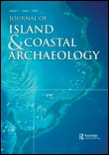
Journal of Island & Coastal Archaeology
Diving Deep into Island Archaeological DiscoveriesThe Journal of Island & Coastal Archaeology, published by Routledge Journals, Taylor & Francis Ltd, stands as a leading publication in the fields of archaeology, ecology, and history, boasting a prestigious Q1 ranking in multiple categories as of 2023. Since its inception in 2006, this journal has been a vital resource for researchers, professionals, and students interested in the rich archaeological heritage of island and coastal regions. With an impressive Scopus ranking that places it in the top tiers of both Arts and Humanities and Social Sciences, it offers insightful studies and innovative methodologies that address the complexities of human interactions with marine and terrestrial environments. The journal aims to advance knowledge and promote discussion through rigorous peer-reviewed articles, fostering a deeper understanding of indigenous cultures and their environmental contexts. While currently not offering an open-access model, the journal remains committed to disseminating high-quality research crucial for shaping future archaeological scholarship.

Water Waves
Fostering Excellence in Wave ResearchWater Waves is a leading academic journal dedicated to advancing research in the fields of analysis, applied mathematics, computational mathematics, and modeling and simulation. Published by SPRINGERNATURE, the journal has positioned itself as a vital resource for researchers and professionals who are exploring the dynamic behaviors of water waves and their applications across various scientific disciplines. With an ISSN of 2523-367X and an E-ISSN of 2523-3688, the journal provides a robust platform for disseminating high-quality research findings, featuring works that reflect innovative methodologies and significant contributions to the understanding of water dynamics. With its publication corridor extending from 2019 to 2024 and achieving a commendable Q2 quartile ranking in multiple mathematics categories for 2023, "Water Waves" emphasizes its commitment to fostering scholarly excellence. Despite its evolving status, the journal remains accessible to a wide audience, underscoring its significance in shaping the discourse in its respective fields, while also providing vital insights and fostering collaboration among researchers, academicians, and students alike.

Journal of Operational Oceanography
Bridging Science and Practice in Marine ResearchThe Journal of Operational Oceanography, published by Taylor & Francis Ltd, stands as a pivotal platform within the field of oceanography, focusing on the integration of operational practices, technology, and scientific research. With a strong impact factor and a notable Q2 quartile ranking in the category of Earth and Planetary Sciences, this journal offers researchers, professionals, and students a vital resource for disseminating new knowledge and innovative methodologies related to ocean studies. Covering a range of topics from marine data analysis to the application of oceanographic principles in sustainable practices, the journal’s content is crucial for advancing understanding in this dynamic field. Operating since 2008 and continuing through 2024, it is dedicated to fostering collaboration and dialogue among the scientific community, ensuring accessibility to essential findings that drive informed decision-making in marine science. With its commitment to high-quality, peer-reviewed articles and a ranking in the top 10th percentile of its category, the Journal of Operational Oceanography is an indispensable resource for those looking to make significant contributions to marine research.
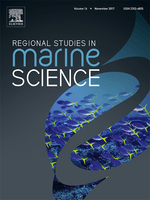
Regional Studies in Marine Science
Connecting Research to Coastal ConservationRegional Studies in Marine Science, published by Elsevier, is a leading academic journal dedicated to advancing the understanding of marine ecosystems and their regional dynamics since its inception in 2015. With an ISSN of 2352-4855, this journal is indexed in Scopus and has achieved impressive ranking quartiles, notably Q2 in categories like Animal Science and Zoology, and Ecology, showcasing its relevance and impact in these fields. As of 2023, it ranks in the 79th percentile for Animal Science and Zoology, reflecting its significant contribution to academic discourse. While the journal operates under a traditional access model, its rigorous peer-review process ensures the publication of high-quality research that is crucial for understanding ecological interactions and fostering sustainable practices within marine environments. Researchers, professionals, and students alike will find this journal an invaluable resource for the latest findings and advancements in marine science, as it strives to bridge the gap between research and practical application at regional and global levels.
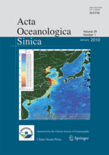
ACTA OCEANOLOGICA SINICA
Innovating Insights into Aquatic EcosystemsACTA OCEANOLOGICA SINICA, published by SPRINGER, stands as a significant voice in the fields of Aquatic Science and Oceanography, contributing vital research and insights since its inception in 1985. With an ISSN of 0253-505X and an E-ISSN of 1869-1099, this journal maintains a strong international focus, delivering high-quality peer-reviewed articles that address pressing marine and freshwater environmental issues. Although it operates under a subscription model, its Q3 ranking in both Aquatic Science and Oceanography demonstrates its solid standing within Scopus, placing it in the 48th and 44th percentiles respectively. The journal aims to foster knowledge exchange and collaboration among researchers, professionals, and students by providing a platform for innovative studies and comprehensive reviews. With a dedicated editorial board and a commitment to advancing scientific understanding, ACTA OCEANOLOGICA SINICA serves as an essential resource for anyone engaged in the study of oceanographic phenomena and aquatic ecosystems.

GEO-MARINE LETTERS
Connecting Science to the Depths of Our PlanetGEO-MARINE LETTERS, published by Springer, is a prestigious academic journal that has been a pivotal platform for the dissemination of innovative research in the fields of Earth and Planetary Sciences, Oceanography, Environmental Science, and Geotechnical Engineering since its inception in 1981. With an E-ISSN of 1432-1157, this journal has established itself in the Q2 quartile across multiple categories in 2023, indicating its influential position within the scientific community, as reflected by its Scopus rankings. While it currently does not offer an open access option, its rigorous peer-review process ensures the publication of high-quality research that contributes significantly to advancing our understanding of marine and geological sciences. Researchers, professionals, and students alike will benefit from the diverse scope of studies featured in GEO-MARINE LETTERS, making it an essential resource for those engaged in environmental and marine research. Situated in Germany, the journal's commitment to excellence continues to shape critical discussions and innovations in the field.

International Journal of Marine and Coastal Law
Charting New Territories in Marine and Coastal LawThe International Journal of Marine and Coastal Law, published by Martinus Nijhoff Publishers, is a leading academic periodical dedicated to the exploration of legal aspects related to marine and coastal environments. With a strong emphasis on interdisciplinary research, this journal serves as a vital resource for scholars, practitioners, and policymakers engaged in areas such as environmental science, oceanography, and law. Since its inception in 1986, the journal has continuously evolved to address contemporary challenges in the field, boasting a commendable Q2 ranking in Law and Q3 rankings across various relevant categories. The journal facilitates rigorous discourse on pressing issues, providing a platform for high-quality research that aims to inform legal frameworks and enhance sustainable practices. Although it does not offer open access, the journal’s impact extends to its notable Scopus rankings and its essential role in shaping legal discourse on marine and coastal management. Researchers and professionals will find invaluable insights and scholarly contributions that are crucial for advancing knowledge and policy in this critical area of study.
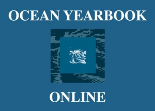
Ocean Yearbook
Exploring the Depths of Oceanic Research and PolicyOcean Yearbook, published by BRILL, is a leading academic journal in the field of maritime law and ocean governance, providing a comprehensive platform for researchers and practitioners in this vital area. With an ISSN of 0191-8575 and E-ISSN 2211-6001, this journal offers valuable insights and critical analyses on contemporary issues affecting the world's oceans, promoting interdisciplinary dialogue among scholars in law, environmental studies, and policy-making. Currently ranked in the Q2 quartile for Law, this journal is positioned among the top-tier publications, reflecting its commitment to academic excellence and relevance. Ocean Yearbook is essential reading for those looking to stay abreast of legal developments and emerging challenges in ocean governance, contributing significantly to policy discussions and academic scholarship worldwide. Its accessibility through subscription, combined with its ongoing commitment to high-quality research, makes it an indispensable resource for students, researchers, and professionals dedicated to understanding and protecting marine ecosystems.
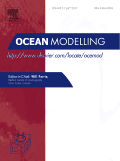
OCEAN MODELLING
Navigating the Depths of Ocean Science.OCEAN MODELLING, published by Elsevier Science Ltd, is a leading journal dedicated to advancing the understanding of ocean systems through innovative modeling techniques and interdisciplinary research. With an ISSN of 1463-5003 and E-ISSN 1463-5011, this journal is esteemed within the fields of Atmospheric Science, Computer Science (Miscellaneous), Geotechnical Engineering and Engineering Geology, and Oceanography, as reflected by its impressive quartile rankings in 2023, including Q1 in Oceanography and Q1 in Computer Science. Researchers and professionals benefit from the journal’s high-impact contributions, as indicated by Scopus rankings that place it among the top-tier publications in its categories. Although not an open-access journal, OCEAN MODELLING provides essential insights and methodologies crucial for both academic and practical applications, facilitating knowledge transfer and innovation among marine scientists, engineers, and policy-makers engaged in vital ecological studies and technological advancements regarding our oceans. Join the forefront of marine modeling research by contributing to and exploring the wealth of knowledge presented in OCEAN MODELLING.